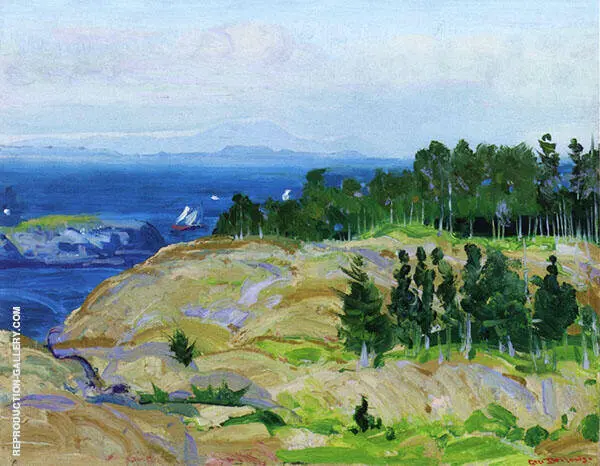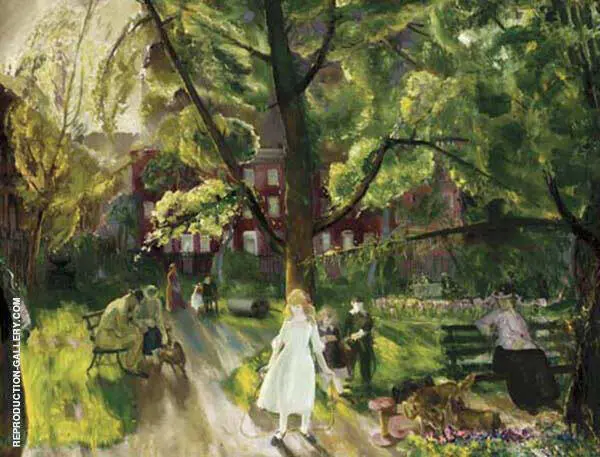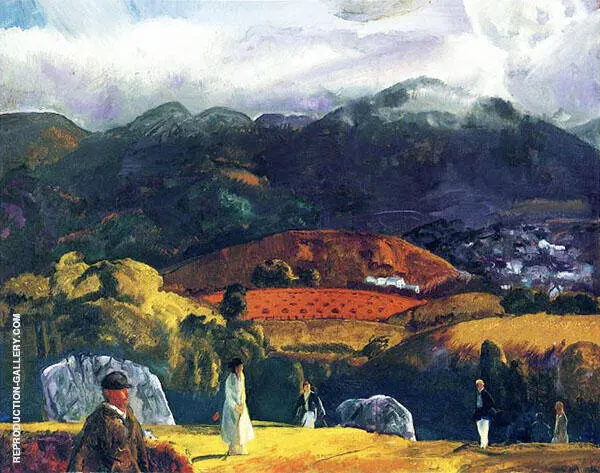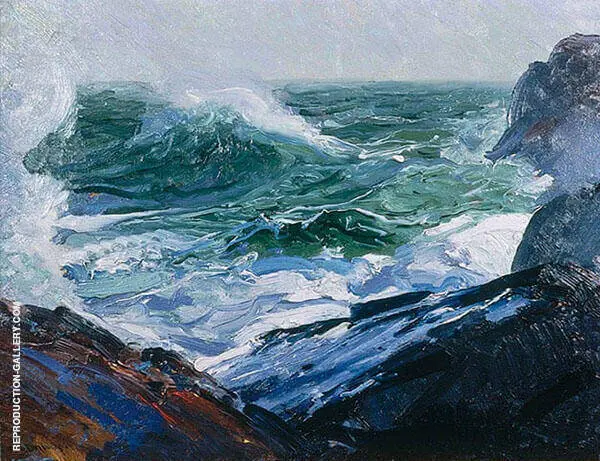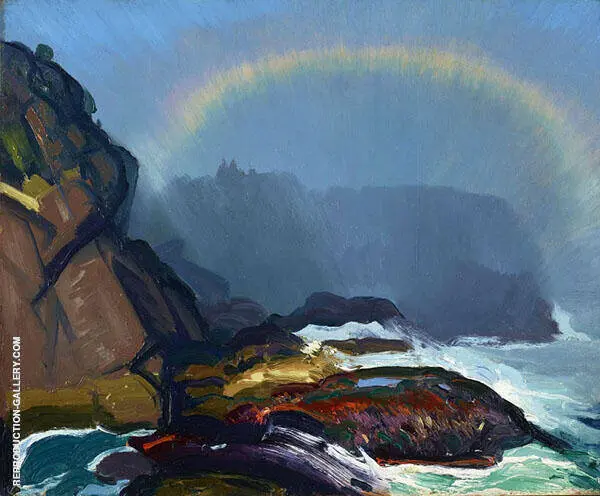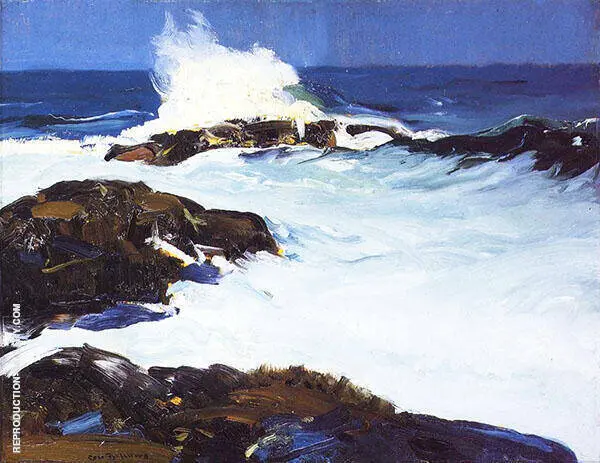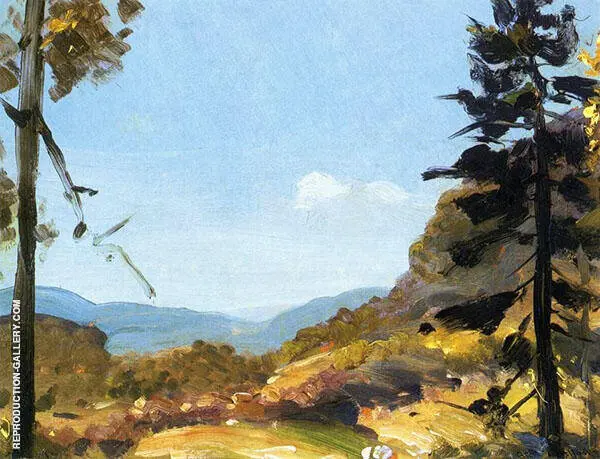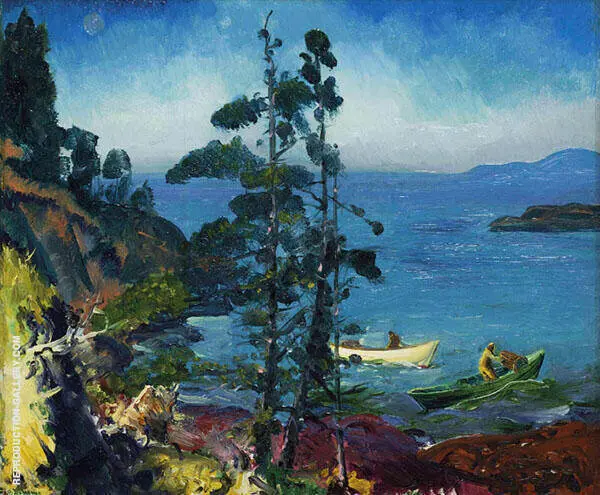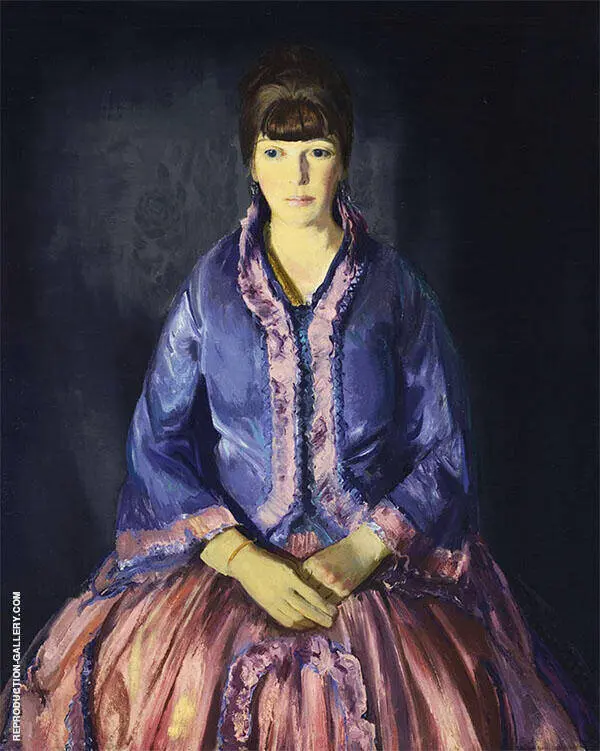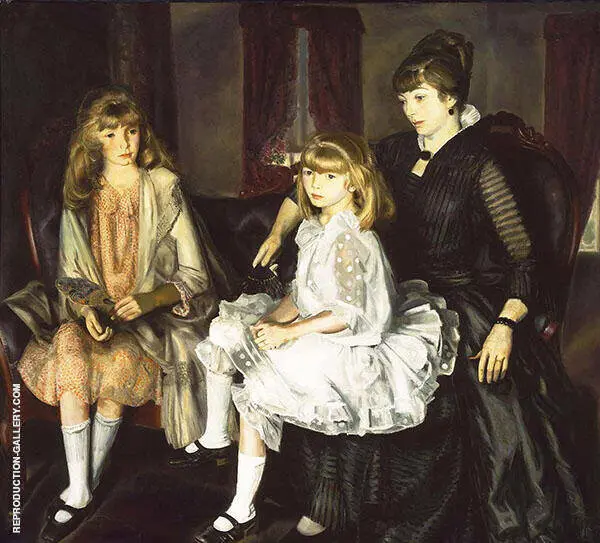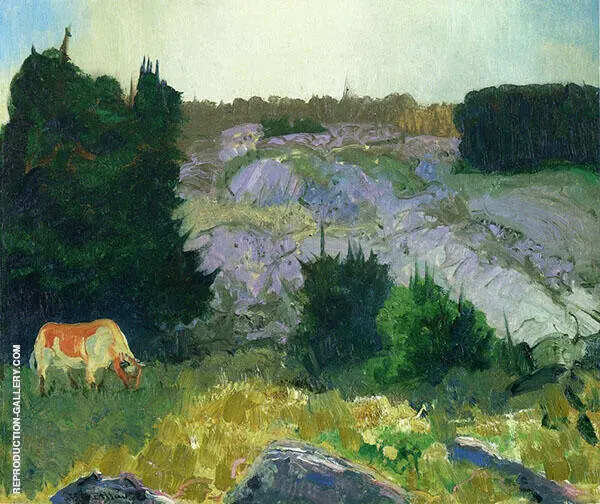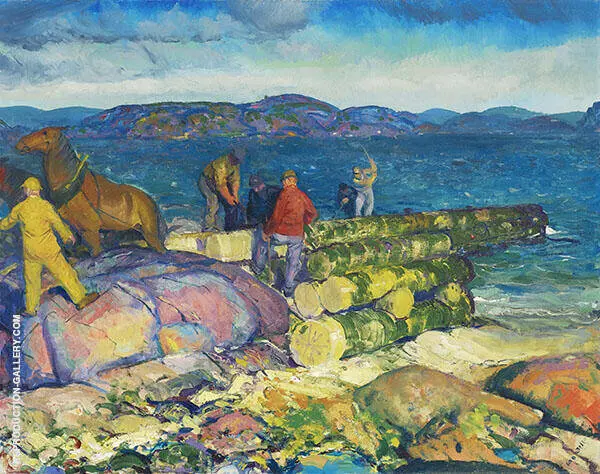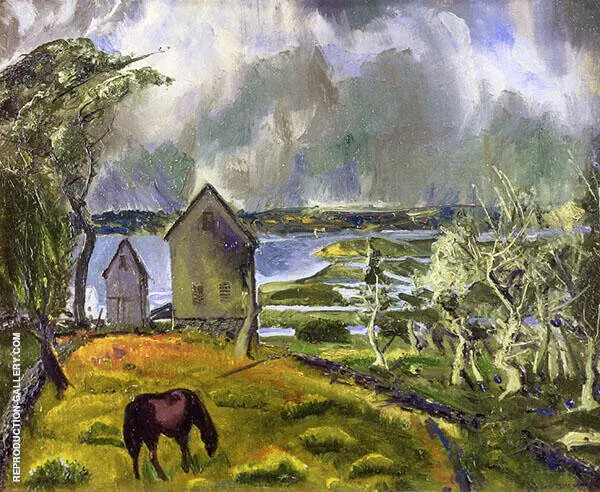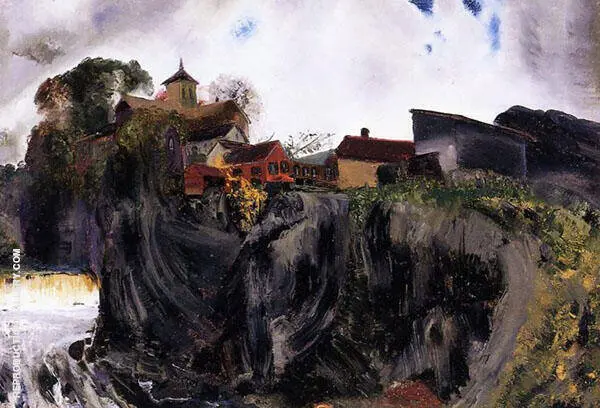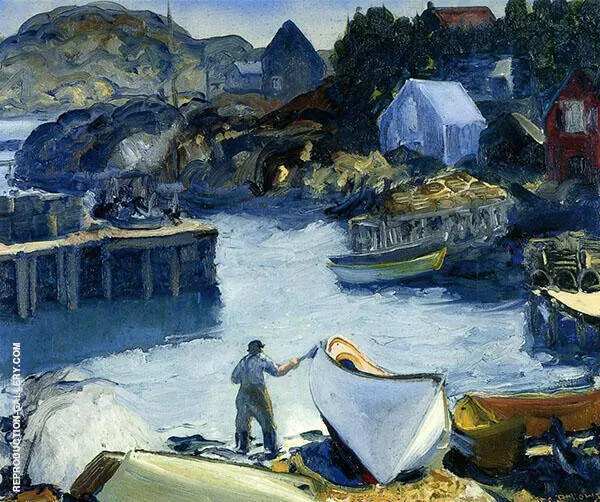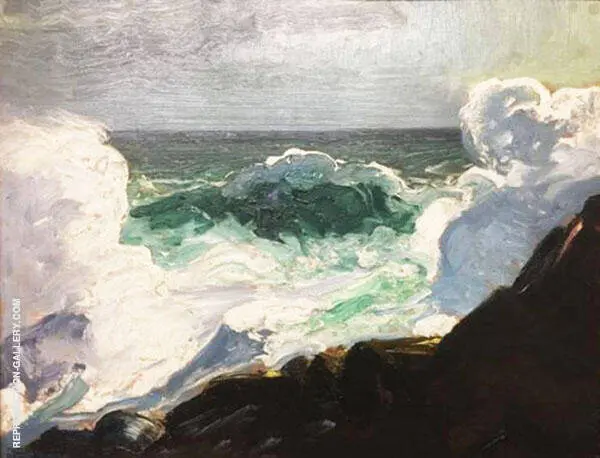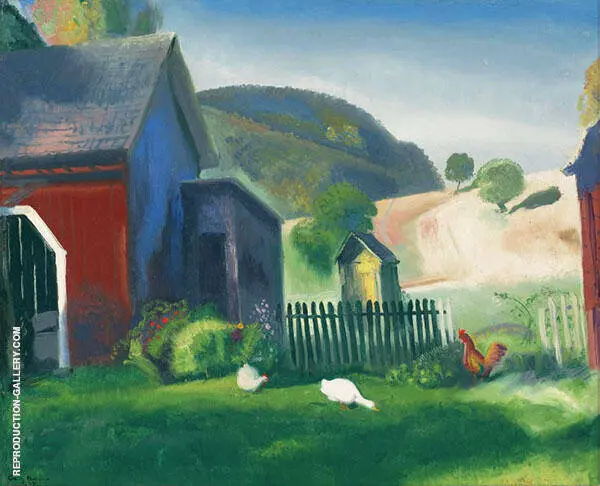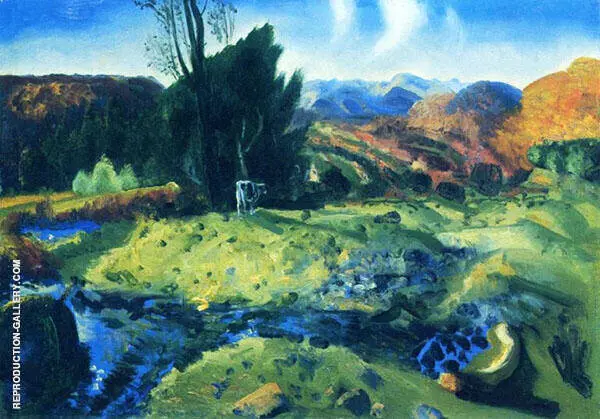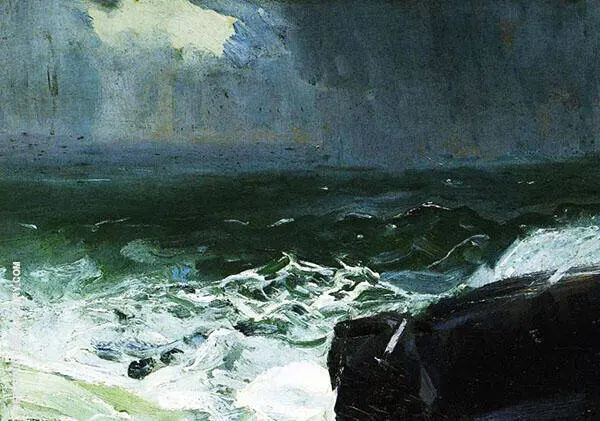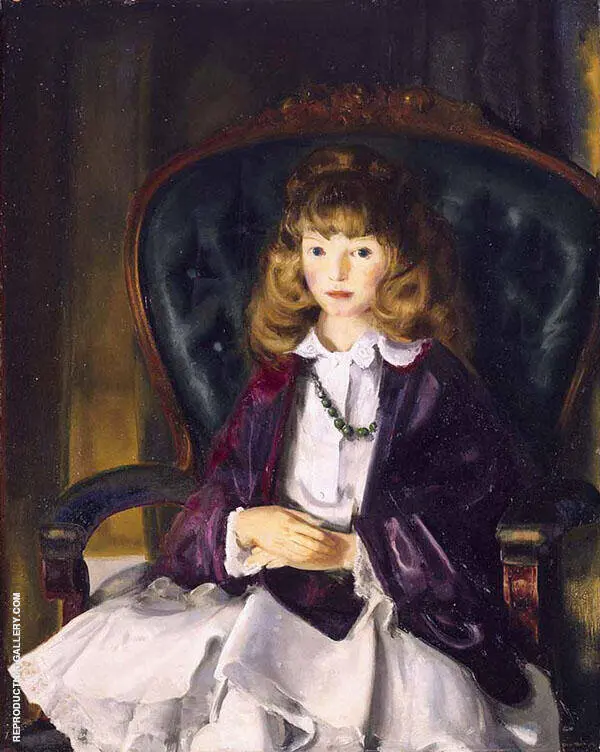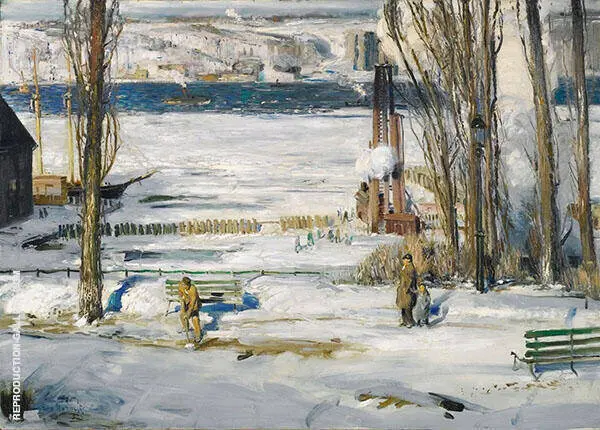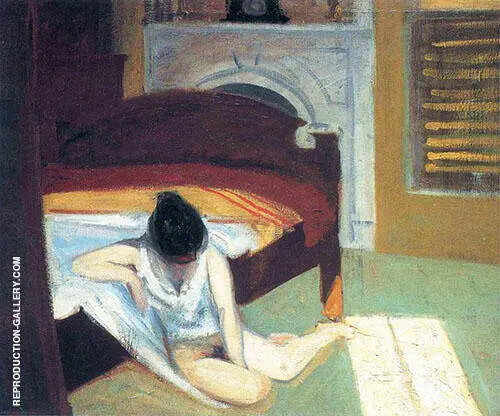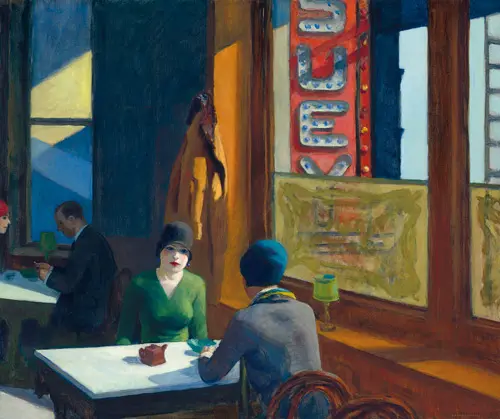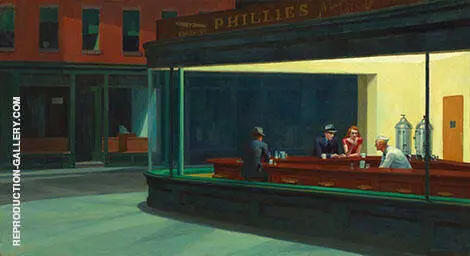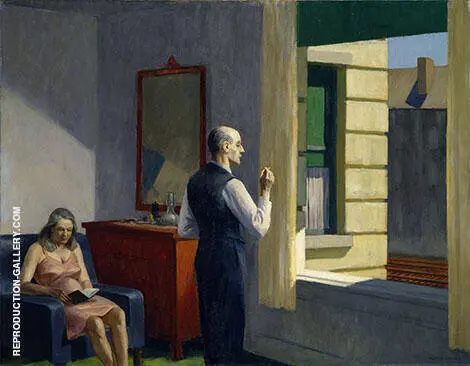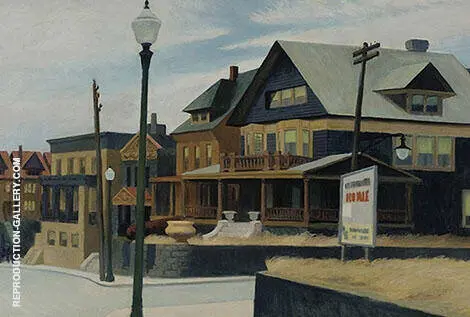Ashcan School Oil Painting Reproductions
Find Ashcan School Oil Painting Replicas by Ashcan School Artists
Ashcan School: A Brief Introduction
Ashcan School refers to a loose grouping of North American 20th century artists. Ashcan artists used realist techniques to present the everyday life of the American urban working classes. The Ashcan School is less well-known than artistic movements such as American Abstract Expressionism and Impressionism art. Despite this, it profoundly impacted the development of American art, with art reproductions of famous oil paintings still highly sought-after today.
This brief introduction answers some of the most commonly asked questions about this fascinating American art movement with a deep social conscience.
What is the Ashcan School of Art style?
Artists within the Ashcan School describe themselves as urban realists. While this covers a broad range of styles and topics, artists associated with the art movement devoted themselves to creating realistic depictions of everyday life in America. Ashcan School paintings challenge American Impressionism, the predominant art style at the time. Famous Impressionism paintings focus on decorative and ornamental art, primarily inspired by European Classicism and French Impressionist artists.
Conversely, the Ashcan School of Art sought to reach the truth of society. While they often depict scenes of poverty, Ashcan artists also represent simple everyday life as they saw it. As well as urban deprivation, this results in some stunning and bucolic scenes capturing a unique moment in early 20th century America. Stylistically, Ashcan artists often use a dark color palette. Labeled the “revolutionary black gang,” their approach shocked many contemporary audiences. Their dark color palette references oil paintings by famous Spanish artists Diego Velazquez and Francisco de Goya, Baroque paintings, and the Dutch Golden Age art of Rembrandt van Rijn.
Ashcan art also inspired more recent realist trends pioneered by Edouard Manet and Edgar Degas. These artists use simple compositional techniques allowing them to paint scenes from memory. Indeed, many of the artists honed these skills during years of working as newspaper illustrators.
When did The Ashcan School start?
The Ashcan School style began towards the end of the 19th century and was prominent in the first decade of the 20th century. Initially, American galleries and audiences considered their subject matter too gritty and unsettling. Artists consequently often struggled to gain critical and commercial success. Finally, however, the trend changed with a show at the National Arts Club in 1904, followed by a legendary and well-publicized exhibition of “The Eight” at Macbeth Galleries in 1908.
The movement was relatively short-lived and lost momentum with the onset of World War II. While the conflict did not reach American shores directly, European modernist art movements such as Cubism, Fauvism, and Abstract Art came to dominate. With these developments, the highly localized creations of the Ashcan artists looked increasingly out of touch with a rapidly changing and globalizing world.
Why is it called The Ashcan School?
There are two suggestions about how the movement gained its name. Firstly, some cite a complaint in the journal The Masses criticizing pictures of “ashcans and girls hitching up their skirts.” The comment amused Robert Henri and his artistic colleagues, who also described themselves as “Apostles of Ugliness,” the name stuck.
A second theory argues that the group’s name derives from a specific drawing by George Bellows. Titled Disappointments of the Ash Can, the artwork features three homeless vagrants peering into the contents of a dustbin. Whatever the actual origin, the name is particularly fitting for the movement. Artists championed “art for life’s sake” with normal subjects, including prostitution, street children, and boozy backroom bars. In direct contrast to the concept of “art for art’s sake.” Although Ashcan School artists are primarily middle class, they sought to depict the reality of urban poverty in a rapidly industrializing nation. While often used derisively at the time, the Ashcan School name was also a tongue-in-cheek reference to other artistic schools. It reinforces the artists’ irreverent take on classical rules and academic techniques.
Who started the Ashcan School?
Given that the Ashcan School referred to a loose grouping of artists rather than a clearly defined artistic movement, no “official” leader existed. Nonetheless, the painter Robert Henri is the group’s founder. Disenchanted with American Impressionism, Henri adopted a distinctly realistic and, at times, brutal technique to show the suffering of the poor. Paintings such as Snow in New York 1902 and The Laundress 1916 exemplify this approach.
Studying at the Pennsylvania Academy of Fine Arts and graduating in 1888, Henri later worked in Paris and at the School of Design for Women in Philadelphia. Here, he befriended four illustrators in their early careers, including William James Glackens, Everett Shinn, John Sloan, and George Luks. Henri mentored the four artists, sharing a studio where they developed the artistic techniques and social conscience defining the movement. The group subsequently moved to New York in the early 1900s. These Philadelphia artists comprise the first generation of the Ashcan School. A second generation derived from Henri’s later New York students. Among these artists, George Bellows remains the most famous.
Who was the leader of Ashcan Art?
While Robert Henri started the Ashcan School, George Bellows was one of its most famous later students. The Columbus Museum of Art describes Bellows as “the most acclaimed American artist of his generation.” The artist moved to New York as a young man, quickly becoming associated with Henri’s “The Eight” group of artists. George Bellows paintings of this period included Cliff Dwellers 1913 and Men of the Docks 1912. Both oil paintings represent the harsh realities of life in New York City and changing patterns of immigration, work, and unemployment.
Nonetheless, paintings such as Stag at Sharkey’s by George Bellows exemplify the artist’s approach to representing everyday life as he experienced it. With quick brushstrokes, the immediacy and blurred movement of two fighters in the ring burst into life. As well as a masterful painting in its own right, it offers a fascinating insight into society in early 20th century New York.
Who are the famous artists of the Ashcan School?
Some of the best artists in the Ashcan School included Robert Henri, George Bellows, George Luks, Ernest Lawson, Maurice Prendergast, Arthur B Davies, and William James Glackens. In addition to these names, one particularly famous artist stands out. Edward Hopper also studied under Robert Henri and is frequently cited as an Ashcan artist. Despite this, Hopper himself never embraced the Ashcan label. He once claimed his representations of New York featured “not a single incidental ashcan in sight.”
Considering works like Edward Hopper Nighthawks' oil painting, it’s not hard to see why he’s counted amongst Ashcan artists. Hopper’s paintings evoke realism and attention to detail prized by the art movement. Particularly in works such as Apartment Houses 1923, Sunday 1926, and Chop Suey 1929, the loneliness and isolation of working-class urban life shine through.
Why is the Ashcan Studio of Art famous?
Artists from the Ashcan School are best known for their depictions of the poorer neighborhoods of New York City. Despite this, they portray the city’s vitality and thriving nature as frequently as its darker sides. The result is a wide array of styles and subject matter. Well-known paintings such as George Bellows’ New York or Everett Shinn’s View of the East River depict the city. Other artists, such as John French Sloan, foregrounded the city’s inhabitants. With paintings such as Sunday Women Drying Their Hair or McSorley’s Bar, everyday New Yorkers have monumental importance and presence. Today, the Ashcan artists' famous paintings depict bustling docks, busy city streets, and nightclub scenes.
Due to this massive variety of styles and topics, Ashcan artists document the anxiety, confidence, and excitement evident in America's development into a global superpower. By drawing public attention to the hardship of poorer communities, they also often link to French Realism artists Jean Francois Millet and Gustav Courbet.
Discover art reproductions from the Ashcan School.
Look no further if you are searching for reproduction oil paintings from the Ashcan School. Discover replica paintings of Stag at Sharkey’s by George Bellows and Nighthawks by Edward Hopper.
Buy fine art reproductions and oversized wall art to suit the largest homes or offices.
Cannot Find What You Are Looking For?
Reproduction Gallery Information
Customer Service
(Send Us A Message)
Tel: (302) 513 3464

